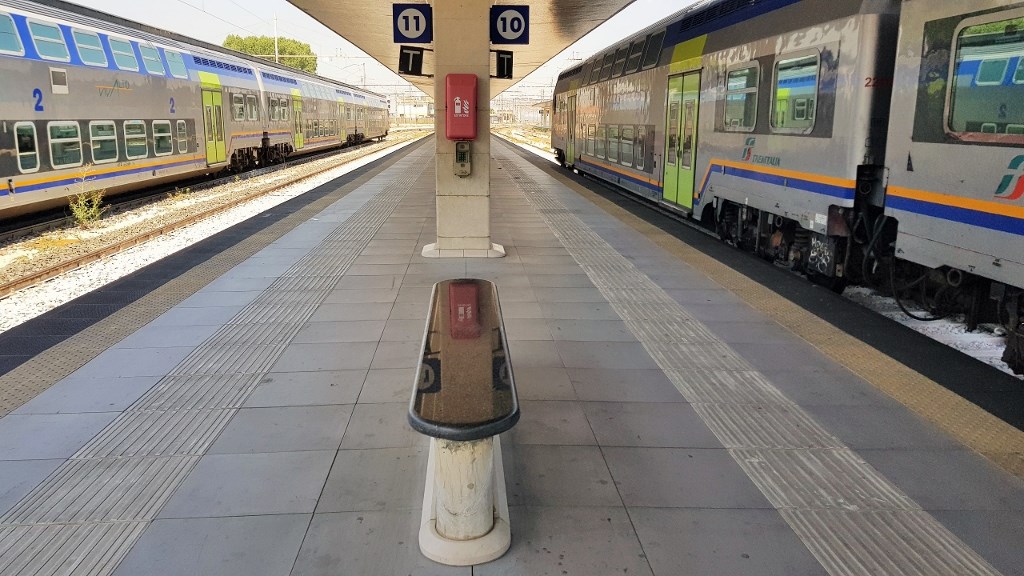
The first piece on rail travel in Italy was obviously appreciated, and there’s still more to tell to help the independent traveller arrive where he or she wants to go, without paying fines, supplements, or ending up in the wrong place.

Timetables
Mainline stations have electronic noticeboards which are clear, but in smaller stations you may need to look at the timetable. Departures (Partenze) are always written on yellow paper and are – you’ve guessed it – very confusing with lots of asterisks and other symbols. Look out for feriale (work days) and festivi (holidays) to see when trains are running. Be aware that some trains might not run on Sundays (Domenica).Also look out for the word sciopero – pronounced shopero – which means strike. (Often on Thursdays.)Transport strikes happen with worrying regularity in Italy, and if you express dismay they just shrug their shoulders and say, “The whole point of a strike is to inconvenience passengers.”
Express Trains
If you’re travelling longer distances you’ll probably want to travel on an Inter City, Eurostar or Freccia Rossa or Argento (Red or Silver arrow) train where you have a reserved seat. The prices are much higher for those trains, and if you’re only carrying a regular regionale ticket you’ll have to pay a huge supplement. (Nowhere does it say this on timetables.)
Interestingly, accelerato trains, contrary to what you might expect, are Italy’s slowest trains.
Sometimes the long distance trains don’t stop where you expect them to. Some trains from Rome to Bologna for instance pass through Florence without stopping at Florence’s main station, Santa Maria Novella. They stop instead at one of Florence’s out-of-centre stations. The same sometimes applies at Bologna. The mainline station is Bologna Centrale. The city’s other station is way out in the suburbs. You need to check the timetable.
Rail Travel to Other Countries from Italy
If you’re touring Europe, it’s as well to know that the Italians have their own names for Paris, Parigi, and Nice, Nizza. This is what you will see on timetables or on destination boards. Similarly, and oddly enough, the Italian name for Munich is Monaco. Don’t confuse the two places and end up on the Cote d’Azur!
All this information may have given the impression that rail travel in Italy is just too stressful. Don’t give up! Armed with the correct information, you will find that trains are usually punctual, very cheap, and frequent, because they are state subsidised. Some journeys don’t get much better in terms of the scenery the train passes through. (Florence to Rome, for instance.)
Buon viaggio!

